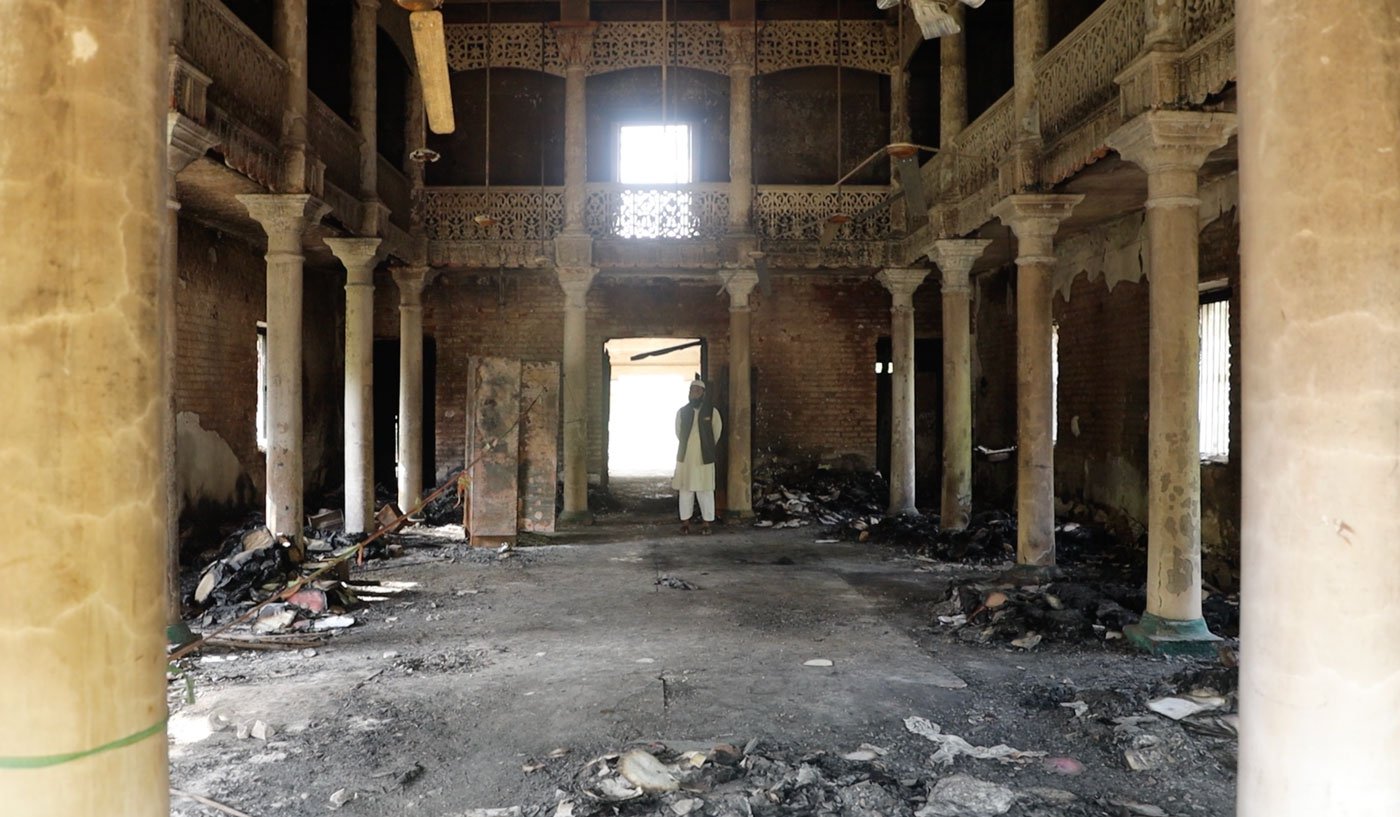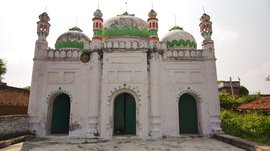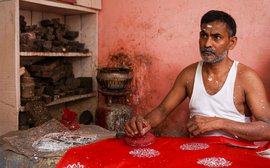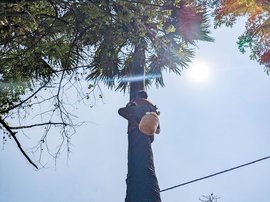“Burn them!”
These are the words that Mohan Bahadur Budha recalls from the night of March 31, 2023, when the 113-year-old Madrasa Azizia was set on fire.
“I heard people shouting and breaking the main gate of the library. When I came out, they had already entered the library and were ransacking it,” says the 25-year-old security guard.
The crowd, he adds, “had
bhala
(javelin),
talwaar
(swords) and were armed with bricks as weapons.
Woh log chillah rahe the, ‘Jala do, maar do
’ [They were shouting, ‘kill them, burn them’].”
'There were 250
kalmi
[handwritten] books in a cupboard, including books related to philosophy, eloquence and medicine'
Budha is a migrant from Nepal. He had been working at Madrasa Azizia in Biharsharif city for the last year and a half. “When I requested them to stop, they started attacking me. They punched me and said, ‘ Sala Nepali, bhago yahan se, nahi to maar denge [You damn Nepali, run away from here or we will kill you’].”
He is referring to the events of March 31, 2023, when the
madrasa
(school and library of Islamic studies) was set ablaze by communal rioters during the Ram Navami procession in the city.
“Nothing is left in the library,” says Budha. “They now don't need a security guard. Now I am unemployed.”
PARI visited Madrasa Azizia in early April 2023, a week after communal rioters had attacked not just this
madrasa
, but other places of worship in Biharsharif town, the headquarters of Nalanda district in Bihar. Initially authorities had placed the city under Section 144 of the Criminal Procedure Code (CrPC) of 1973, and there was an internet shutdown, but both were lifted after a week.
A former student, Syed Jamal Hasan is walking listlessly around when we visit and says, “There were so many books in the library, but I could not read all of them.” He started in this school in 1970 as a young boy in Class 3 and studied up to
aalim
(graduation).
“I have come to see whether there is anything left,” says Hasan.
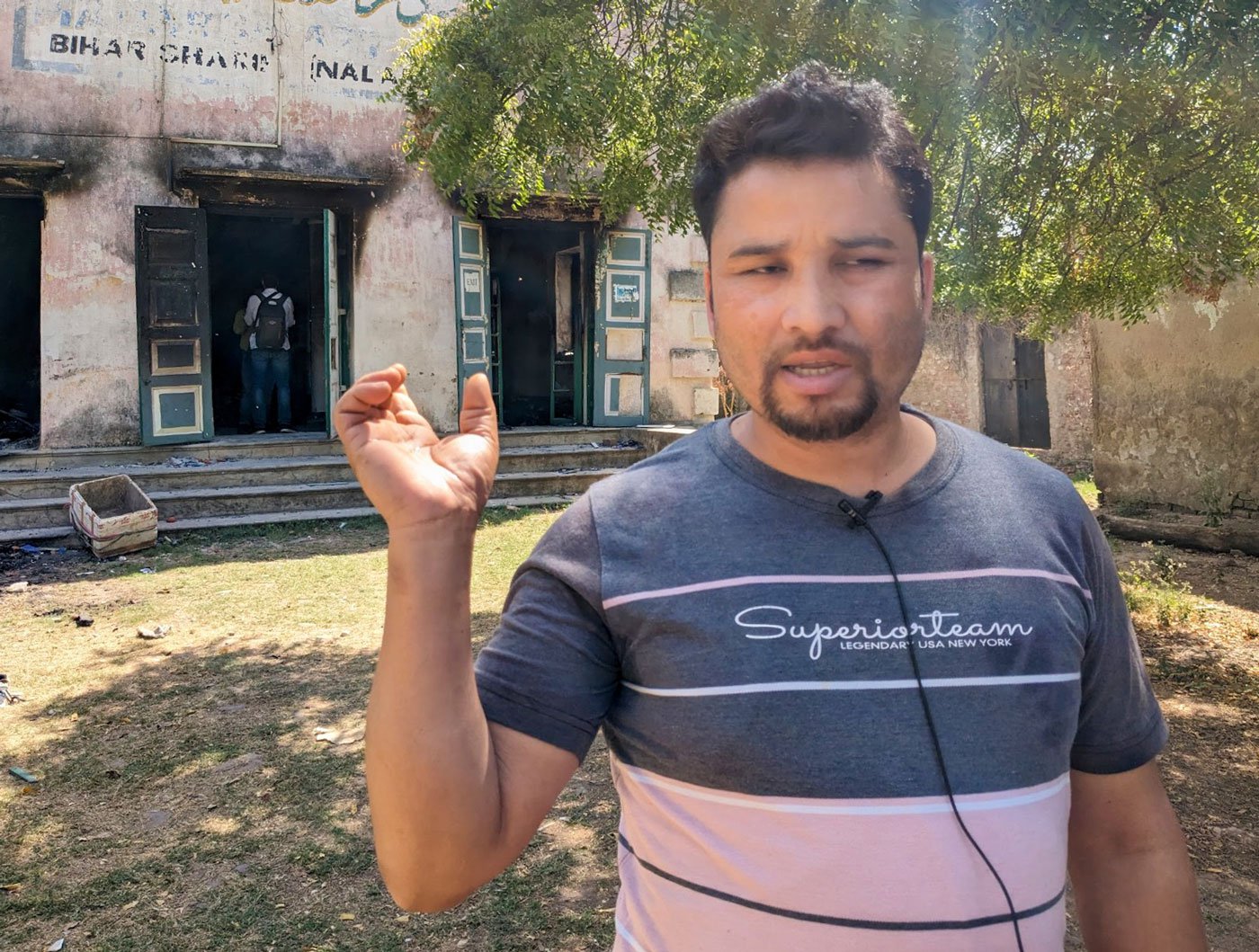
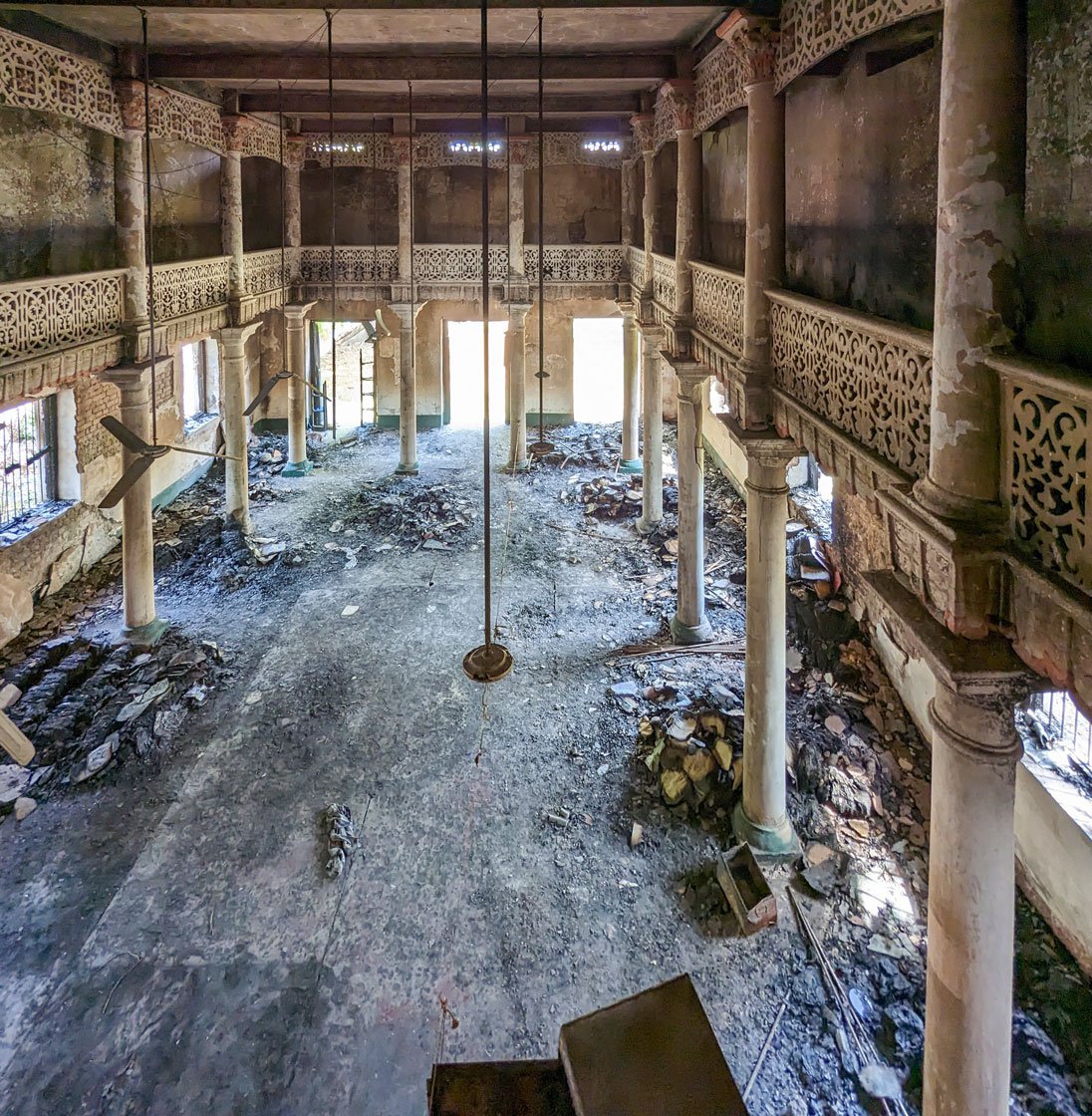
Left: Mohan Bahadur Budha, the security guard of the library says that the crowd had bhala (javelin), talwaar (swords) and were armed with bricks as weapons. Right: A picture of the library after the attack
As the 70-year-old looks around, it is clear that the hall he once studied in as a young man has been gutted and destroyed. There are blackened papers and cinders of burnt and half-burnt books everywhere. The walls of the library where students and teachers read and researched through the school day are black with smoke and have cracked. The smell of burnt books hangs in the air. The antique wooden cupboards that housed the books have been reduced to ash.
The 113-year-old Madrasa Azizia had around 4,500 books, of which 300 were a handwritten set of the complete Quran and Hadith, holy books of Islam. The school Principal, Mohammed Shakir Qasmi says, “There were 250
kalmi
[handwritten] books in a cupboard, including books related to philosophy, eloquence and medicine. Apart from this, admission registers, mark sheets, certificates of the students studying from [the year] 1910 were there in the library.”
Recalling that fateful day, Qasmi says, “As soon as I reached near the City Palace hotel, I saw that the situation in the city was very serious. There was only smoke everywhere. The [political] conditions were not such that we could venture out into the city.”
The Principal was only able to enter the
madrasa
early in the morning the next day. There was no electricity in the entire city of almost 3 lakh people. “I came alone at four in the morning. When I looked at the library with my mobile torch, I was shocked. I didn't even have the courage to handle myself.”
*****
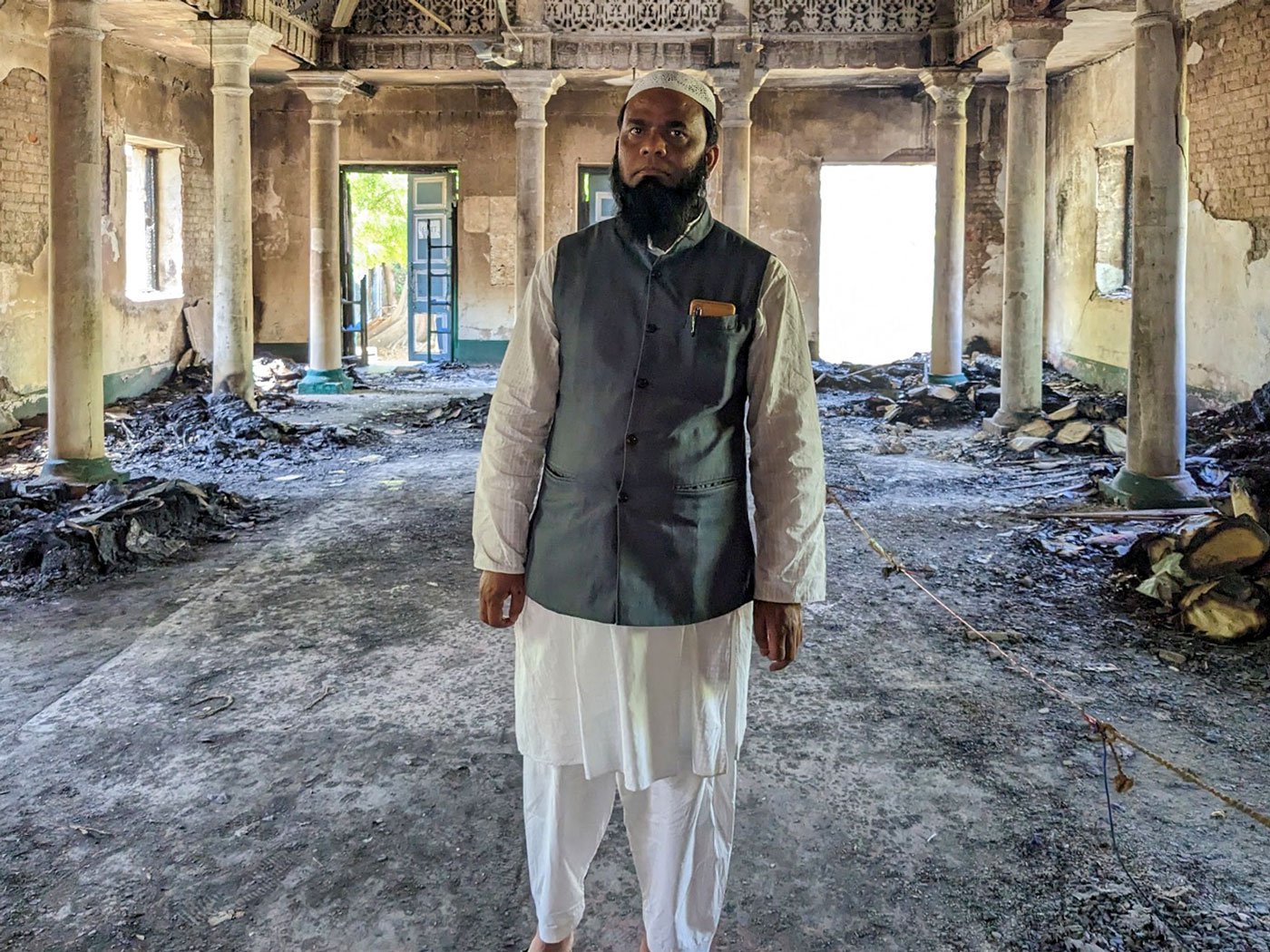
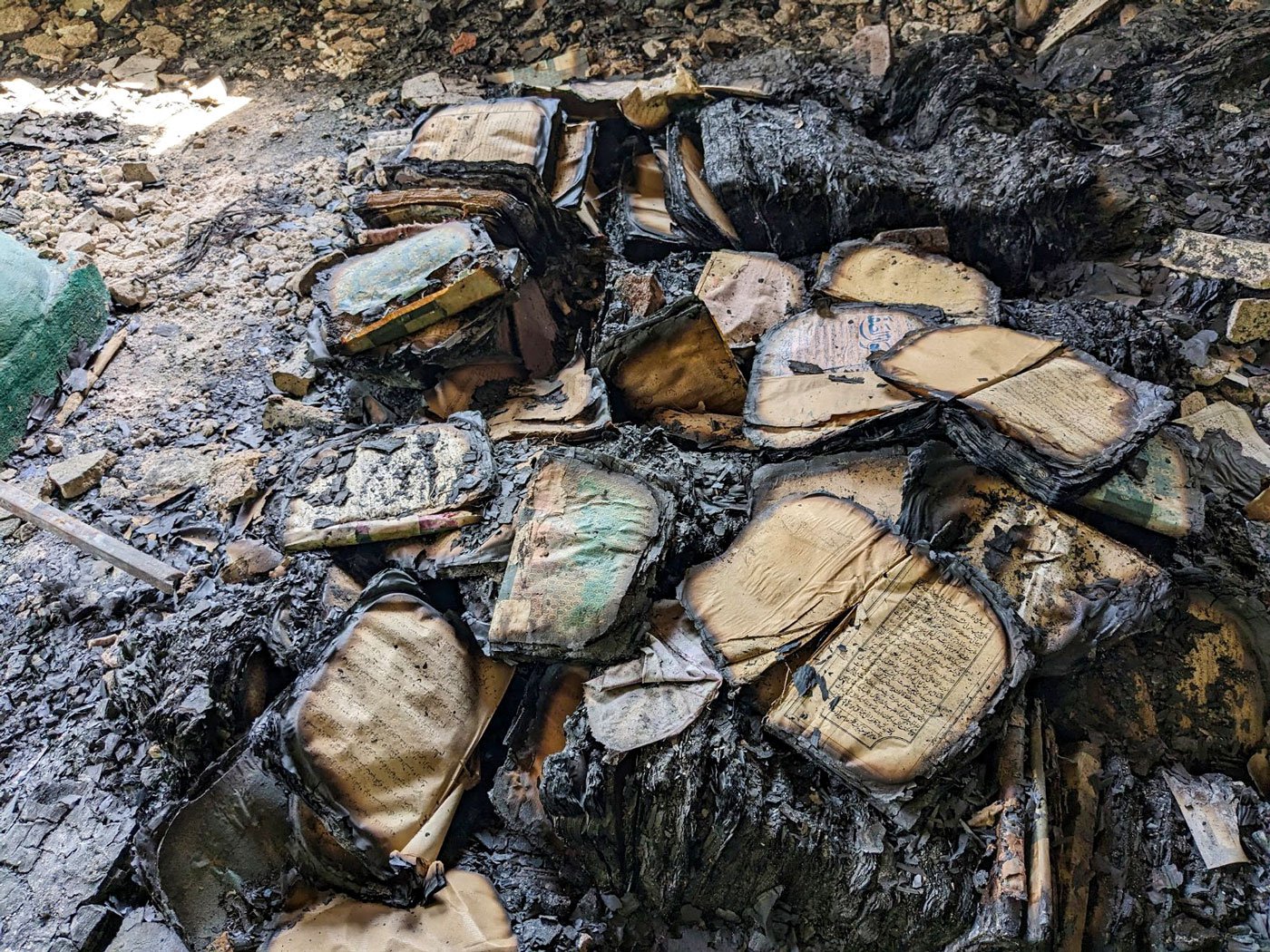
Left: Mohammad Shakir Qasmi, the Principal of Madrasa Azizia, is first generation teacher from his family. When he had visited the library on 1st April, he was shocked to see the situation. Right: Remnants of the burnt books from the library
More than half a dozen roadside vendors are busy selling fish near the entrance of Madrasa Azizia. The area is crowded with customers and the voices of shopkeepers mol bhaw (bargaining). Vehicles are passing by on the road; things appear to be normal.
“There is a temple on the west side and a mosque on the east side of the madrasa . This is the behtareen alaamat [best sign] of Ganga-Jamuni tehzeeb [syncretic cultures],” points out Principal Qasmi.
“Neither were they troubled by our
azaan
[prayers] nor have we ever been troubled by their
bhajans
[devotional songs]. I had not imagined that rioters would spoil our
tehzeeb
[culture]. We feel very sorry.”
Others in the school say that the next day as well rioters tried to damage other rooms by throwing petrol bombs. More than a dozen shops and godowns were destroyed and looted and this reporter was shown copies of many First Information Reports (FIRs) lodged by locals in and around the area, citing losses.
Communal violence is not new in Biharsharif. In 1981, a major communal riot was reported but locals say, even at that time, the library and
madrasa
were not attacked.
*****
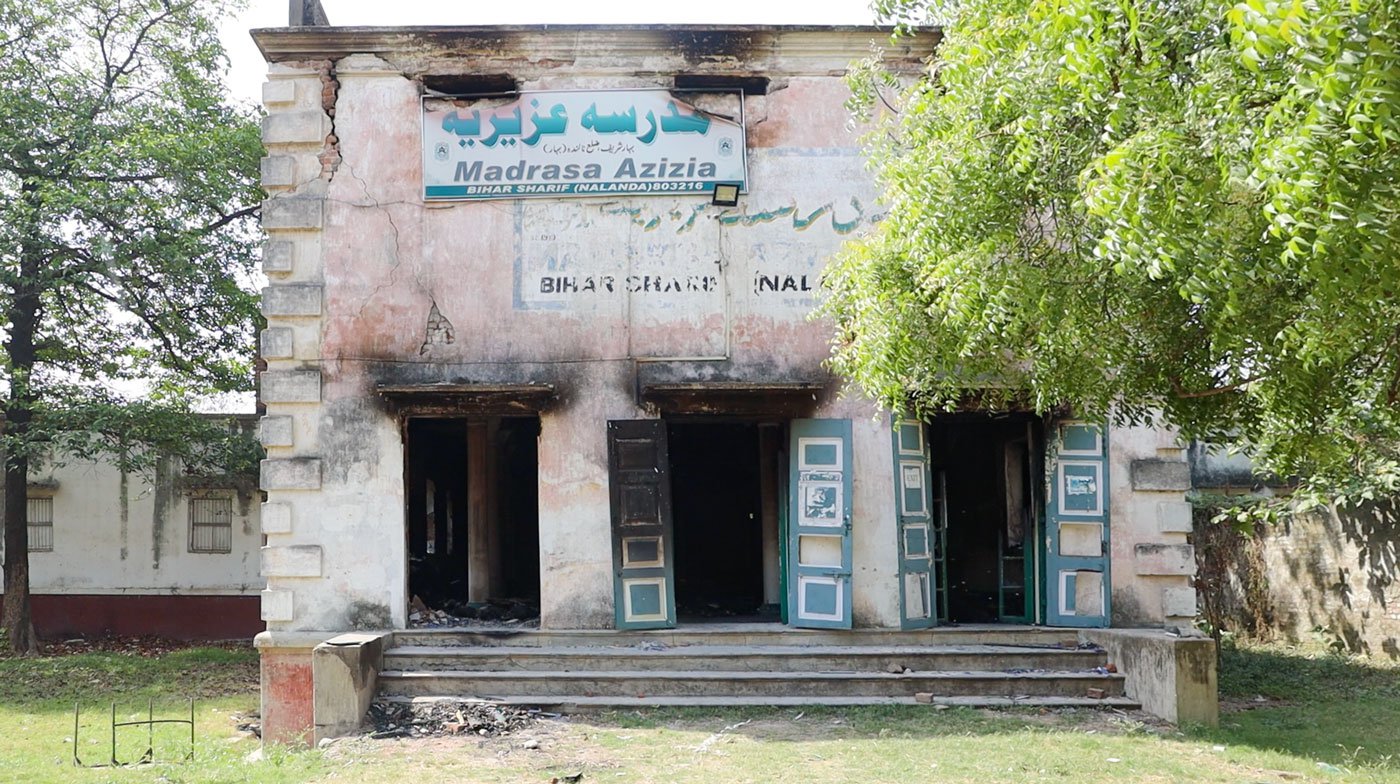
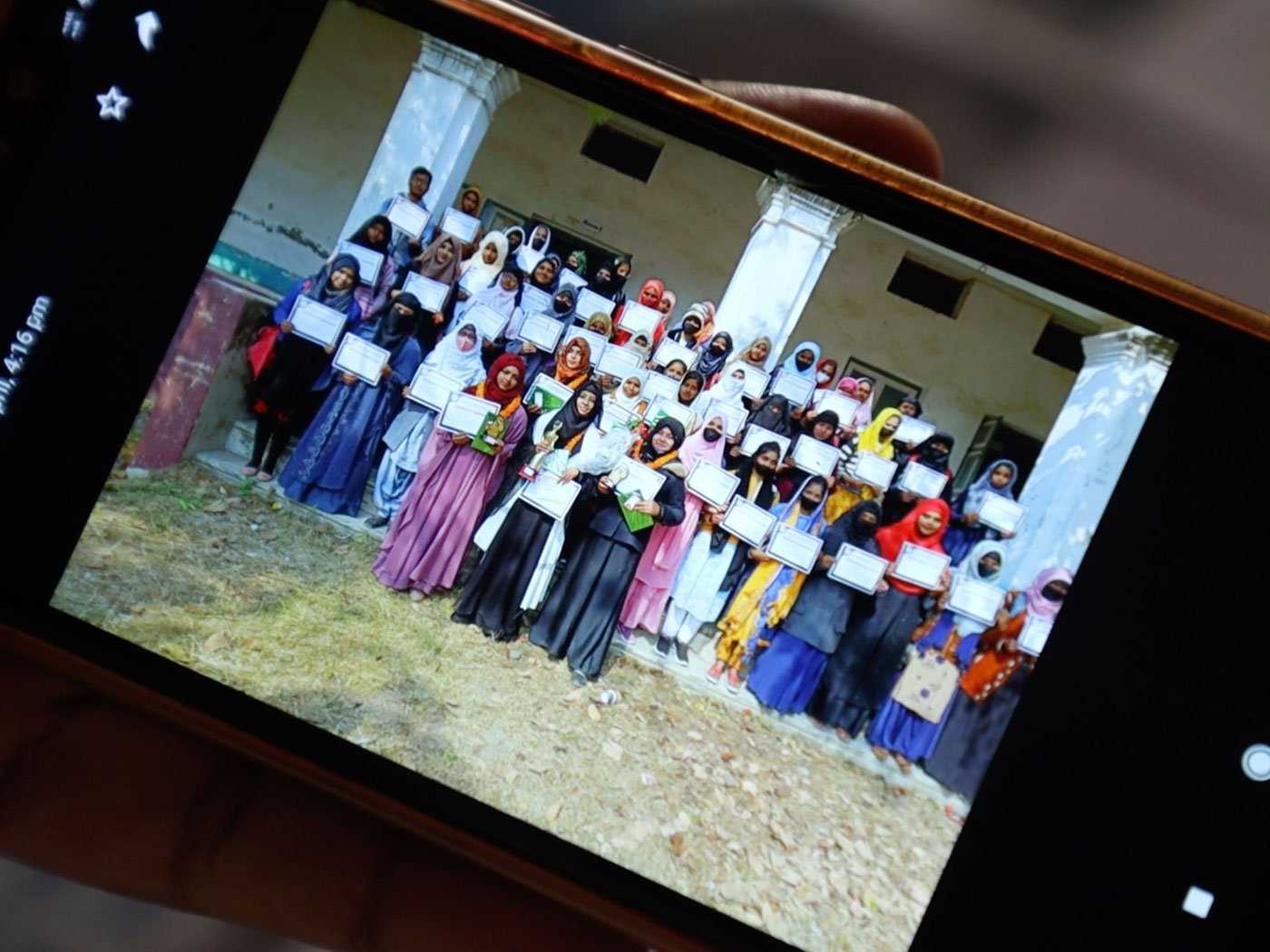
Left: The Madrasa Azizia was founded by Bibi Soghra in 1896 in Patna and was shifted to Biharsharif in 1910. Right: Principal Qasmi showing the PARI team an old photo of Madrasa Azizia students when a cultural program was organized
A total of 500 young boys and girls are enrolled at the Madrasa Azizia, founded by Bibi Soghra in 1896. A student who joins here can finish with a post graduate degree, equivalent to Bihar’s state board.
Bibi Soghra set it up after the death of her husband Abdul Aziz, a landlord in the area. “She also established the Bibi Soghra Waqf Estate and the income from the land was used for social work – running the
madrasa
for education, a clinic, maintenance of masjids, pensions, food distribution and more,” says Umar Ashraf, founder of the Heritage Times.
This
madrasa
is also part of the project Taalim-i-Naubalighan – an adolescence education programme of the United Nations Population Fund (UNFPA), the Bihar Madrasa Board and Bihar Education Department that was started in 2019.
“Perhaps this wound [burning down of the
madrasa
and library] will heal a little, but it will continue to give us pain,” says Mokhtarul Haque, administrator of the Bibi Soghra Waqf Estate.
This story is supported by a fellowship in memory of a trade unionist from Bihar who championed the struggles of marginalised people in the state.
